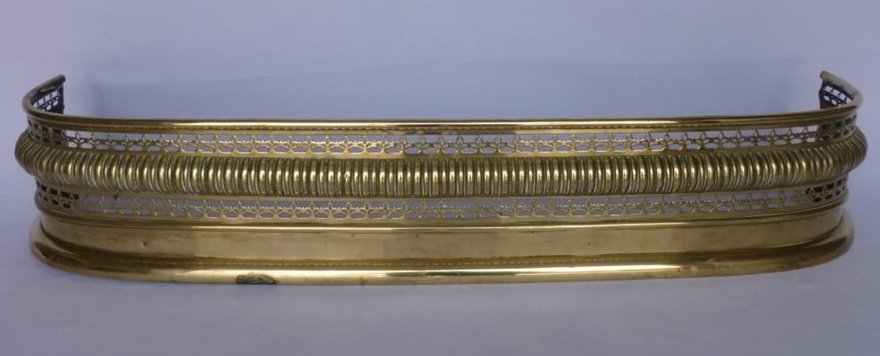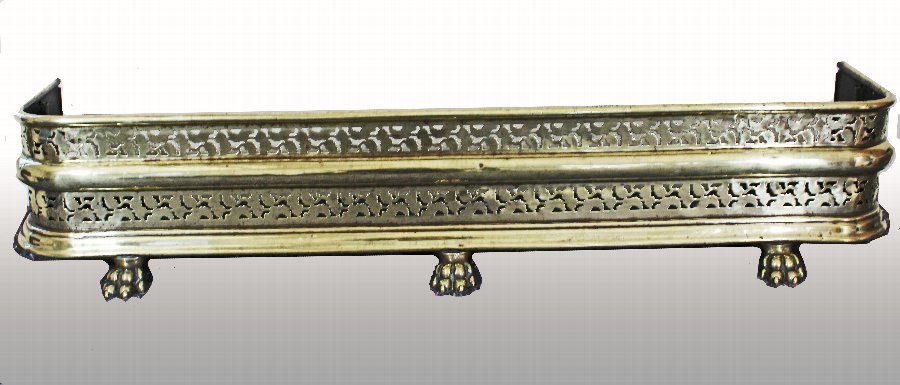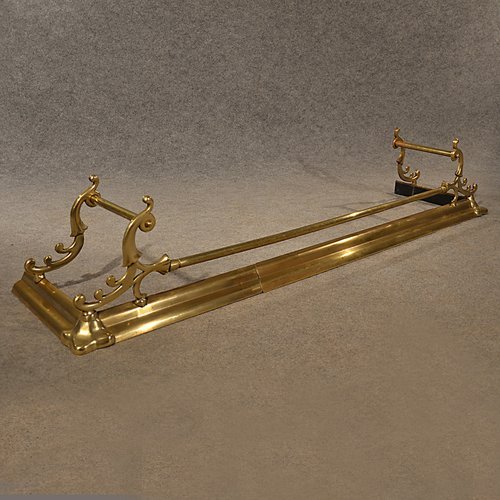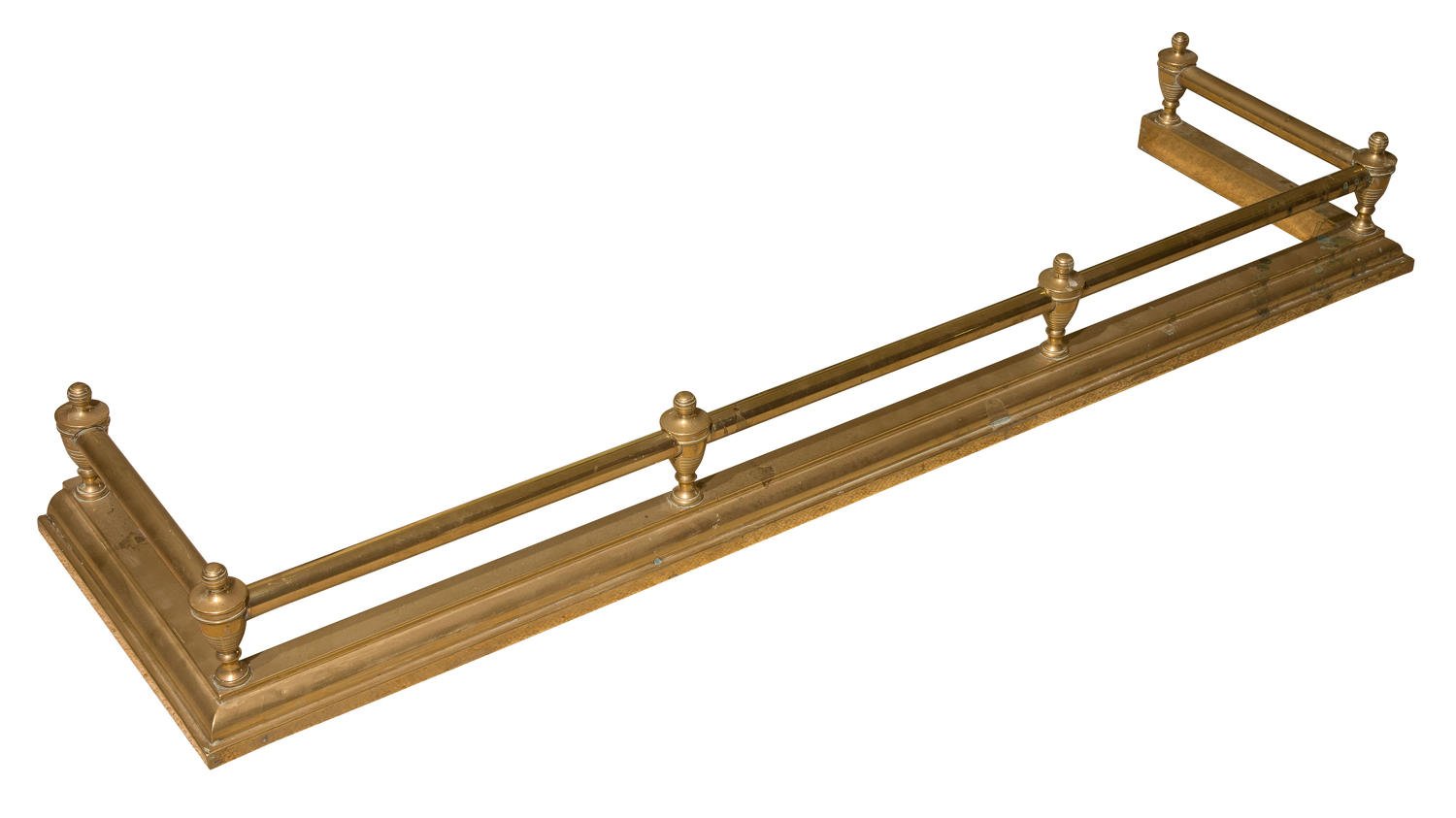 Brass fenders abound and good ones, probably early 1800's imitations can be found. It is of course difficult to determines their age, as the skill of the 1800's makers was very great.
Brass fenders abound and good ones, probably early 1800's imitations can be found. It is of course difficult to determines their age, as the skill of the 1800's makers was very great.The evolution of the fender forms a pleasing story in connection with the ingle side. In the 1700's when coal began to replace wood for heating, fenders were invented to prevent hot coal embers scattering across and scorching the wooden floor or the carpeting in front of the fire. They were made in iron, and also in brass and iron. Generally the front piece was of pierced brass supported by iron brackets and standing on an iron base plate.
 Perhaps the earlier form likely to interest collectors is that made of perforated brass, often some 8 in. or 10 in. in depth. These fenders standing on claw feet were afterwards fitted with bottom plates of iron, on which was a ridge or rest against which the fire brasses were prevented from slipping. Many of the designs were Classical after the Adam revival. At this time too some fenders incorporated stands for the fire-irons so the need for separate dogs declined.
Perhaps the earlier form likely to interest collectors is that made of perforated brass, often some 8 in. or 10 in. in depth. These fenders standing on claw feet were afterwards fitted with bottom plates of iron, on which was a ridge or rest against which the fire brasses were prevented from slipping. Many of the designs were Classical after the Adam revival. At this time too some fenders incorporated stands for the fire-irons so the need for separate dogs declined.Then came iron or steel scroll-shaped fenders, tapering down from a few inches in height at the ends to centres almost level with the ground. To obviate the inconvenience of there being no resting-place for the fireirons loose supports were fitted into sockets at the ends, and these afterwards were cast as part of the scroll.
 Next came the stiff and formal early Victorian metal work—iron fenders with steel tops relieved occasionally by ormolu ornament. These in their turn gave way to fender kerbs of metal, stone, marble, or tiles, and loose ornamented fire-dogs which have in more recent times served as rests for the fire brasses.
Next came the stiff and formal early Victorian metal work—iron fenders with steel tops relieved occasionally by ormolu ornament. These in their turn gave way to fender kerbs of metal, stone, marble, or tiles, and loose ornamented fire-dogs which have in more recent times served as rests for the fire brasses.Brass fenders abound and good ones, probably early 1800's imitations can be found. It is of course difficult to determine their age, as the skill of the 1800's makers was very great.
1700's brass fenders are very small in comparison with those of the 1800's. The comfortable Victorian fender with its brass fire-irons became standard furnishing in the Victorian home. In the 1700's fire irons were made of polished steel but the brass shovel, poker and thongs of the 1800's are as popular as ever today.

Brass fire fender with bars for the fire irons
